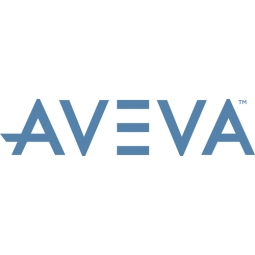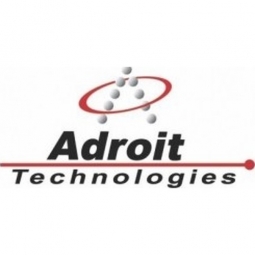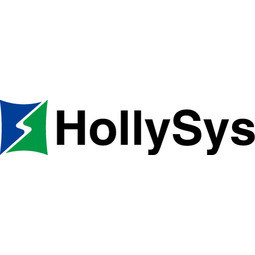AVEVA

概述
|
总部
英国
|
成立年份
1967
|
公司类型
私营公司
|
收入
$100m-1b
|
|
员工人数
1,001 - 10,000
|
网站
|
推特句柄
|
公司介绍
<>AVEVA 创造了激励人们塑造未来的工业软件。我们相信行业进步应该会提升人类体验。 <>50 多年的协作创新 我们的客户面临的挑战激励我们开发突破性的解决方案。我们通过共同努力将大胆的想法变为现实,从而利用我们生态系统的力量。 <>增强能力的软件 我们在资产和运营生命周期中构建领先的解决方案,将机会转化为商业价值,不断发展为我们世界提供动力的行业。 <>开拓未来 我们发现赋予人们和行业权力的新方法,使我们的客户取得成功并促进社区的繁荣。
物联网解决方案
我们全面的软件组合为您提供改善资产和运营生命周期所需的一切。借助我们的集成解决方案,您可以消除信息孤岛并推动整个企业加强协作。设计、采购、建造 降低资本项目工程的时间、成本和风险。资产性能 提高资产性能和使用寿命,同时确保安全可靠的工作环境。监控和控制 使用市场领先的 HMI/SCADA 解决方案增强边缘到企业的可见性和控制,帮助您做出决策。计划和时间表 最大限度地提高生产盈利能力并优化供应链和制造。运营和优化 消除低效率,使生产和运营与业务目标保持一致。
母公司
物联网应用简介
AVEVA 是平台即服务 (paas), 应用基础设施与中间件, 分析与建模, 功能应用, 传感器, 自动化与控制, 和 基础设施即服务 (iaas)等工业物联网科技方面的供应商。同时致力于建筑物, 化学品, 建筑与基础设施, 食品与饮料, 生命科学, 海洋与航运, 矿业, 石油和天然气, 造纸, 塑料, 回收与废物管理, 可再生能源, 和 公用事业等行业。
技术栈
AVEVA的技术栈描绘了AVEVA在平台即服务 (paas), 应用基础设施与中间件, 分析与建模, 功能应用, 传感器, 自动化与控制, 和 基础设施即服务 (iaas)等物联网技术方面的实践。
-
设备层
-
边缘层
-
云层
-
应用层
-
配套技术
技术能力:
无
弱
中等
强

Supplier missing?
Start adding your own!
Register with your work email and create a new supplier profile for your business.
实例探究.

Case Study
Coca Cola Swaziland Conco Case Study
Coco Cola Swaziland, South Africa would like to find a solution that would enable the following results: - Reduce energy consumption by 20% in one year. - Formulate a series of strategic initiatives that would enlist the commitment of corporate management and create employee awareness while helping meet departmental targets and investing in tools that assist with energy management. - Formulate a series of tactical initiatives that would optimize energy usage on the shop floor. These would include charging forklifts and running cold rooms only during off-peak periods, running the dust extractors only during working hours and basing lights and air-conditioning on someone’s presence. - Increase visibility into the factory and other processes. - Enable limited, non-intrusive control functions for certain processes.
Case Study
Tata Power Uses AVEVA PRiSM Predictive Asset Analytics Software
- Avoid asset failures and reduce equipment downtime - Identify subtle changes in system and equipment behavior - Gain advanced warning of emerging equipment issues - Monitor the health and performance of critical assets fleet-wide in real time - Improve maintenance planning y Enable knowledge capture to optimize information sharing between plant personnels

Case Study
Ascend Performance Materials Case Study
Ascend operations must access multiple software systems to manage day-to-day operations in an effective and secure manner. These systems generate large sets of data which contain critical information pertaining to management systems, planning and cost information in business systems and energy consumption. As a result, Ascend management was challenged with creating relevant reports reflecting performance measures in overall context of their operational process. The company’s previous process entailed collecting and analyzing data manually which was not effective, since the information collected was generated after the fact, and was too complex for collaborative use across the organization.

Case Study
Pima County takes significant steps in preserving water source
Pima County is facing the following challenges: - Management of more than 60 million gallons of sewage each day to support the region’s population of more than 1 million people. - To take immediate action when alarms sound alerting operators to issues within the plant The solution should be able to enable the following feature: - To ensure capture of institutional knowledge of current workforce for effective training of future operators - To employ an effective Situational Awareness strategy enabling personnel to effectively understand and address operations of the facility - With assets spread out over more than 700 miles, operational management is difficult

Case Study
Nava Raipur: Building a Greenfield Smart City
The challenge was to construct a world-class greenfield smart city in Nava Raipur, the new capital of Chhattisgarh state in India. The goal was to create an environmentally sustainable city that would meet the needs of its citizens and businesses through optimized solutions. The city was to be designed with high livability in mind, focusing on operational efficiency in civic amenities and planning systems. The city planners aimed to enhance the quality of life of its residents through safe, efficient, and sustainable civic amenities and planning systems. The challenge was not just to build a city, but to build a smart city that would serve as a model for future urban development in India.

Case Study
The Nava Raipur Smart City: Quality of life, smart growth, and city resilience
To deliver the first environmentally sustainable smart city as the new capital of Chhattisgarh state.To use optimized solutions to meet the needs of citizens and businesses.To enhance quality of life through safe, efficient, sustainable civic amenities and planning systems.
Case Study
New Belgium Brewing Improves Performance and Meets Customer Demands
New Belgium Brewing, the third largest craft brewery and eighth largest overall brewery in the U.S., was facing challenges in meeting the growing demand for its products. The brewery lacked real-time information on unscheduled downtimes at various equipment areas, which caused production slowdowns. The production staff were continually reacting to unscheduled downtime at equipment areas. Management needed to address gaps in methods and processes to drive improvements. The bottling operation lacked the ability to predict capabilities to effectively commit brewery staff to specific production goals.
Case Study
AVEVA software enables China’s AVIC to design and build new, complex vessels in a global partnership
AVIC International Ship Development Company, part of AVIC International Holding Company, operates two shipbuilding bases in China. The company had been relying on local design software developed in China, which was adequate but lacked the sophistication of design tools offered by competitors in the shipbuilding sector. This was restricting the company’s growth in the cost-constrained market. In 2016, the company began an innovative strategic transformation to evolve from traditional commercial ship design to focus on higher-value vessels to build competitive advantage. AVIC won a construction contract for a new Stena RO-RO, 3100m long vessel, with a passenger capacity of 930. This huge project was a milestone for the Weihai Shipyard and the team came to understand that using their established locally-sourced design technology did not provide the integration, scalability and innovative tools they needed to deliver efficient design and to enable productive collaboration with their Finnish partners, Deltamarin, who were carrying out the detailed vessel design.
Case Study
Adani Transmission Streamlines Processes with AVEVA Bocad
Adani Transmission Limited, part of the Adani Group power and utilities conglomerate, is responsible for designing, engineering, constructing, operating, and maintaining electricity transmission networks across India. The company was tasked with a demanding project that involved the construction of hundreds of towers to carry transmission lines for an inter-state high voltage transmission line project from the new NTPC power plant in North Karanpura. The project required four different types of towers, each with unique detailing. The challenge was to work effectively across the whole design, manufacture, and construction process with no margin for error.
Case Study
Real-Time Value Chain Optimization from Pit to Port
Roy Hill, a fully integrated 55 million tonnes per annum (Mtpa) iron ore operation in the Pilbara region of Western Australia, aimed to build a greenfield iron ore mine and mine process plant based on modern control room automation principles. The goal was to establish end-to-end visibility of the entire mining value chain from pit to port and create an organizational culture free from bureaucracy. The challenge was to avoid the organizational silos that many leading mining companies have evolved from and realize resource-to-market potential by avoiding hidden inefficiencies. The company also aimed to connect, automate, and control each component of the pit-to-port mining site from a control center located 1,300 km away from operations.
Case Study
Plant operational excellence thanks to AVEVA IntelaTrac Mobile Operator Rounds
The Infineum Group, a producer of additives for lubricant oils, was facing challenges in maintaining safety and productivity in their petrochemical plants. The proximity of the plants to inhabited areas made it essential for the sites to be safe and reliable at all times. The company was also struggling with the detection of critical indicators, such as vibrations or the presence of foreign particles, which automatic instruments do not usually detect effectively. The company wanted to maximize the value of the time and experience of the field operators. The company's goal was to increase the plant’s availability by anticipating any potentially damaging situations, optimize operators’ efficiency and reliability during inspection activity, and limit production downtimes to scheduled maintenance only.
Case Study
Operator Training Simulation Solution Strengthens Operator Skills, Improves Safety and More
Fauji Fertilizer Company (FFC) was facing a challenge of training their personnel on the newly-commissioned Distributed Control System (DCS) to reduce operational incidents, increase uptime and equip operators to respond to emergencies. The company also wanted to maintain a high level of performance for experienced operators and new hires alike. Another challenge was to quickly and effectively prepare new plant operators to work in actual control room and field environments. The company was also facing manpower challenges due to upcoming retirements and anticipated higher attrition rate. The company needed a solution that could expose new hires to critical and emergency scenarios that happen only infrequently.
Case Study
Sakhalin Energy Streamlines Contract Management with AVEVA
Sakhalin Energy, the operator of the world’s largest integrated oil and gas development, was facing challenges with its outdated contract management system. The system, which had been in use since the company's formation, provided a database where all tenders and contracts were tracked and their status monitored. However, it did not provide the operational teams full transparency of what was happening, nor did it offer the ability to report on tender and contracting activities. The company was also in the early stages of two major expansion projects and needed a solution that could manage and mitigate potential contract variations and claims associated with these projects.
Case Study
Specialty Sugar Producer Retains Cost-Competitive Edge with AVEVA
Hawaiian Commercial & Sugar Company (HC&S) is a major provider of raw sugar in Hawaii, producing about 200,000 tons annually. However, the company faces stiff competition from larger mainland sugar companies and makers of artificial sweeteners, which have been taking large bites out of the mature sugar market in recent years. To maintain its share of that market, HC&S offers its own specialty sugar brands, which cost more to produce. Therefore, efficiency becomes doubly important to achieve HC&S’s necessary cost-competitiveness. HC&S also makes something else, a “product” that it not only sells, but also uses to increase its efficiency. A fibrous residue called bagasse is used at HC&S as fuel to generate steam and electricity. Most of the steam is used to generate electricity, while the exhaust steam is funneled back into the sugar-production process. Electricity produced at the plant is also recycled back into sugar processing, with the excess power being sold to the local electric utility.
Case Study
Wonderware Success Story: Amalgamated Beverage Industries
Amalgamated Beverage Industries, a division of South African Breweries (SAB), was faced with the challenge of improving the overall production performance and accelerating the commissioning of a new packaging line to effectively address the annual summer demand for soft drinks. The facility needed to conform to Pack ML standards to ensure efficient operation of facility manufacturing equipment. The automation system had to work with existing SAP process order applications and daily production reporting facilities. The company wanted to capture all downtime data using the OMAC model of open control technologies for manufacturing applications. Another challenge was that the software project was being implemented at the same packaging line it was to monitor while it was being commissioned. During commissioning of a new factory line, all focus and effort is centered on this process. However, Amalgamated was challenged to implement both the hardware component and the software simultaneously.
Case Study
Promon Engenharia's Seamless Accommodation of Different Interfaces with AVEVA
Promon Engenharia, a Brazilian engineering company, was facing challenges with system integration and design efficiency. The company was involved in multiple small to mid-sized energy projects in partnerships with local Owner Operators and construction firms. This required them to respond to varying customer requirements and interface with external systems quickly and efficiently at every stage of every workflow. Failure to do so would slow project progress and erode Promon’s profitability and reputation. The company's existing systems did not integrate well with other parties’ technology, and designers could not be self-sufficient with the current technology.
Case Study
Tekfen Reduces Project Execution Times and Cost with AVEVA E3D
Tekfen Engineering, an international Turkish company, was facing challenges due to its global operations across different countries, time zones, and languages. The company was unable to visualize 3D designs, and the verification of design and data iterations required time-consuming face-to-face meetings. The document control procedures were complicated and required much verification. The work was often done across time zones and in multiple languages, which increased the risk of misinterpretation of data, drawings, changes, and specifications. The company was looking to improve the speed, quality, and profitability of its projects by taking intelligent design to the next level. The geographic spread of its projects and multiple requirements for inter-company collaboration dictated a re-evaluation of technologies used in the company’s design process.
Case Study
AVEVA Helps Atkins Maintain a Competitive Edge
Atkins, a leading design, engineering and project management consultancy, operates in Western Australia, a region known for its high cost of doing business. This necessitates the company to be particularly efficient in adding value to remain competitive in the global market. The majority of Atkins’ projects are brownfield ones with difficult access conditions and often inaccurate or incomplete-as-built information available. Traditional surveying techniques can be slow and costly. 3D laser scanning offers a quicker, cheaper and more efficient alternative; however, Atkins needed a 3D design tool that had tight point cloud integration.
Case Study
Wonderware Adds Improved Consistency, Increased Productivity and Higher Quality to the Mix for PVC Compound Fabricator
PVC Compounders LLC, a manufacturer of PVC compounds in pellet form, faced several challenges in their operations. The company operates on a built-to-order model, keeping minimal inventory at their plant. This necessitated daily deliveries of raw materials and careful orchestration of the mixing process to ensure the right ingredients were incorporated at the right time. The company also had to manage extreme temperature fluctuations at their plant site in El Paso, Texas, which could affect the final product. Communication was another challenge, as many of their operators were non-native English speakers. The company's highest priority was ensuring that the recipe for each compound was accurate and consistent, and that plant operators had immediate access to these formulations.
Case Study
Wonderware Success Story: Amadori Group, GESCO Consorzio Cooperativo
Amadori Group, a leading food processing company in Italy, faced challenges in optimizing temperature management during meat processing steps. The company needed to ensure traceability, with exact temperature data for every step: processing, stocking, and preservation. They aimed to deploy a system that improves plant efficiency. However, they faced difficulty in software migration from an outdated version to a highly innovative and scalable system. They also needed to create a temperature control system that adjusts according to the external weather conditions. The most sensitive part of production was the correct management of temperature, both in the processing and in the stocking and preservation steps. Temperature must be kept constant in the cold stores used in the preservation of slaughtered meat in order to prevent it from quickly spoiling.
Case Study
Wonderware Success Story: Xcellerex
Xcellerex, a company revolutionizing the way biopharmaceuticals and vaccines are developed, manufactured, and commercialized, faced the challenge of integrating complex technology with ultra-high levels of functionality. The company aimed to create a biomanufacturing platform that employs single-use technology, controlled environment modules, process automation, and electronic batch records. The goal was to address the growing demands in the biomedical market space for more effective biopharmaceutical manufacturing processes and develop a solution that would define a model for improving how biopharmaceuticals, vaccines, and other therapeutics are developed, manufactured, and commercialized.
Case Study
Aibel Delivers on Big Oil Project with AVEVA
Aibel, a leading service company in the upstream oil & gas industry, was tasked with the engineering, procurement, and construction of a 22,500 ton drilling platform for a global energy company called Equinor. The project was massive in scale and required collaboration from over 850 engineers from all over the world. The challenge was to manage this large-scale project across multiple international offices and deliver the platform on time and under budget. The scale of the project was such that it was unsupportable by most software.
Case Study
Airbus Helicopters Chooses AVEVA Solutions for Equipment Testing and Certification Processes
Airbus Helicopters, a leading manufacturer of military, commercial, emergency service and private helicopters, was facing challenges in operating its product testing benches. The company needed a robust software platform and process applications to accurately and efficiently operate its product testing benches. The existing system needed to be replaced with a single, easy-to-use solution for supervising test beds and logistics. The new system needed to be open and extensible, capable of interfacing seamlessly with additional testing installations. The deployment of the new solution had to be done without jeopardizing the functionality of the overall testing centre.
Case Study
Plascon Paints a Brighter Production Picture with Help from Invensys Operations Management Solutions
Plascon, a successful paint and coatings company, was facing challenges in maintaining batch consistency and uniformity in their manufacturing process. The company had initially implemented Wonderware InBatch software in 1995, but as they expanded their product line, they realized the need for an upgrade. The existing technology infrastructure could not keep up with Plascon’s expanding business operations, leading to poor production efficiency, lack of detailed traceability, and a multitude of errors inherent in manual processes. Production scheduling became more difficult, and automated batch reports detailing the productivity process could no longer be produced for plant management. The new software infrastructure had to address key operational issues such as clearly defined batch recipes, detailed displays of batch status, and a reliable, semi-automatic mode of batching.
Case Study
Asset Management software helps leading NASCAR team Drive Down Costs and Optimize Performance
Hendrick Motorsports’ manufacturing complex contains six buildings, each with its own inventory warehouse. These include separate buildings for each individual racing team’s facilities. As each car is tested and modified for optimum performance on varying racetracks, its crews use parts from these buildings. Documenting the performance of each part in each possible race car configuration is important. Hendrick Motorsports (HMS) had been tracking these activities manually, which was tedious, time consuming, and costly. Scott Lampe, chief financial officer for HMS, is responsible for optimizing resource use for both on-track performance and cost. Toward this end, he implemented the Microsoft’s Business Solutions-Dynamics SL financial program, which he wanted to integrate into a single, compatible system to manage inventory, track parts usage, and maintain a historical profile of car performance. This integration required overcoming the following challenges: Coordinating information across 6 warehouses that are operated as independent entities, Tracking usage of approximately 150 components on each car, Monitoring performance reliability, Getting the system up and running within 4 months.
Case Study
Italpresse Gauss Taps New Revenue Streams with AVEVA’s Monitoring and Control and AR/VR Platforms
Italpresse Gauss, a company that builds machines and automatic work cells for light alloy casting primarily for the global automotive industry, was looking to develop a custom HMI that operates with other OEM devices and software platforms. They also wanted to incorporate AR/VR technologies as an asset performance and remote support tool to support the company’s leadership position in Industrie 4.0. The challenges they faced included introducing Industrie 4.0 technologies to a traditional aluminum foundry industry, leveraging breakthrough AR/VR technology to pilot new asset performance management and operator training solutions, and delivering new concepts to market on an aggressive timeline.
Case Study
ST Powder Coatings Uses Wonderware Software Solution to Connect ERP and Plant Systems and Fill Thousands of Customized Orders Every Day
ST Powder Coatings, a producer of high-end, intricately customized thermosetting powder coatings, needed a software solution that could integrate information between the plant and business systems, and enable them to keep production efficiency and product quality consistently high. The company had a requirement to get the plant up and running as quickly as possible. They needed a very short development time to start shipping product within 4 months. The integration of information between the business system and the plant was key to ST Powder Coatings' ability to accurately fill its customers unique and variant orders. The software also needed to assist ST Powder Coatings quickly identify the source of product variations when a color does not turn out precisely how the customer expected.
Case Study
AVEVA Maintenance Management Solution pays off for CF Industrial Fertilizer Plant
CF Industries, one of North America’s largest agricultural fertilizer producers, had been using a homegrown maintenance planning and tracking application developed on IBM System/36 computers and later migrated to the IBM AS400 platform. This system was effective in managing maintenance activities but keeping it in pace with CF Industries’ growing business was proving to be expensive, with investments already well over $1 million. Management reasoned that migration to a Windows-based system would enable them to continue and expand their automation-driven maintenance process improvement, while providing a familiar, easy-to-navigate desktop environment, and a standard, Internet enabled platform on which to build future enhancements.
Case Study
Fujirebio Diagnostics Implements Paperless Electronic Initiative for its Biomarker Manufacturing
Fujirebio Diagnostics, a trusted source of innovative solutions in clinical diagnostics, was facing challenges with its existing paper-based GMP record system and manual process. The company was spending significant time each day manually reviewing reports. The paper-based system was not only time-consuming but also vulnerable to reporting errors. Moreover, any new system implemented had to enable the company to remain in compliance with federal regulation.
Case Study
Woodlands Dairy Improves Production Monitoring and Control with Wonderware System Platform
Woodlands Dairy faced the challenge of integrating a second-hand powder plant from Denmark with an outdated control system into their existing operations. The control system was not suitable for the modifications required to adapt the process to Woodlands Dairy’s specifications. This prompted the company to consider how this expansion could be integrated with the rest of the site. The company needed a single platform that could integrate all the disparate plants on site while preserving past investments in expensive assets and legacy systems while making provision for future expansion. They also needed a centralized environment for process data logging which would allow them to analyze data in real-time and produce reports. The system also needed to comply with ISO 22000 standards and the project had to be completed without any interruptions to production.
Case Study
Oceana Shipyard Gains Global Competitive Advantage by Streamlining Production Process with AVEVA Enterprise Resource Management
Oceana, a new, medium-sized shipyard specializing in the production of AHTS, PSV and offshore supply vessels, faced several challenges in streamlining its ship production process. Accessing all the necessary information was difficult, and planning across all disciplines was unreliable. The production process was inefficient as people and systems worked separately, not together. The company also struggled with high production costs and assembly times. Furthermore, there were issues with material delivery, with incorrect materials being delivered to the wrong places at the wrong times.
Case Study
KTY Engenharia Improves Production Processes with AVEVA's Visual Engineering
KTY Engenharia, a company serving the oil & gas, energy, and infrastructure industries, was facing challenges in managing the vast amount of data involved in their engineering projects. The company was dealing with multiple projects concurrently, requiring regular contact with external partners and interoperability of tools used by all parties. The company was committed to continuously evolving and improving its working practices, and mastering the use of AVEVA tools was considered core to this strategy. One of the main concerns was the reliability and trustworthiness of information shared between documents. Large projects involved a complex interchange of documents and multidisciplinary information, where the slightest error could cause significant delays.
Case Study
AVEVA helps a well-established Canadian shipyard stay competitive in the field, and increase efficiency and meet deadlines easily.
Chantier Davie (Davie), a diversified shipbuilder, produces various types of ships for both naval and commercial clients. The latest project, called ‘Resolve’, is the conversion of a 182.5-metre container ship into an auxiliary oil replenishment vessel for the Canadian Navy, to be completed in only 24 months, including design and delivery. To achieve the deadline for the complex rebuild, Davie had to evaluate existing tools and processes, to maximise efficiency across design, planning, supply chain and production. Before engaging with AVEVA ERM, Davie was facing several challenges in the planning and supply-chain domains. The challenges revolved around missing visibility of materials for planning, and around planning for the supply chain. Most of the systems used for supply chain and planning management were home-grown and supplemented with various Microsoft Excel sheets and Access databases.
Case Study
Yamal LNG Enhances Collaboration with AVEVA
Yamal LNG, a joint venture operating in the Russian arctic, faced several challenges in its project. The harsh climate made any setbacks dangerous and costly. The project involved many partners, making it difficult to keep documents up-to-date and approved by all. The need for manual checking of documents every 3-4 months was time-consuming and prone to errors. The process also precluded the simultaneous and common review of documents by teams which were geographically dispersed. The project's location within the Arctic Circle added an additional challenge, as even small delays could have a large impact on time scales if work is pushed into the arctic winter.
Case Study
Wonderware System Platform Supports Strategic Management of Operations at Cray Valley’s Resin Production Plant
Cray Valley, a global leader in the manufacture of resins, composites and coatings, needed to update the control and monitoring of its three alkyd resin production manufacturing lines. The existing technology architecture had become obsolete and was no longer supported by the original developer. The aging PLC control system and SCADA infrastructure had no available technical support, access to spare parts or software updates, putting the entire manufacturing operation at risk. The challenge was to convert the plant to a new system capable of ensuring total visibility throughout the production process in a controlled and timely manner. The project also had to be implemented quickly to avoid disruption of manufacturing operations.
Case Study
A Comprehensive Plant Solution for the Production of Coated Abrasives
sia Abrasives Industries AG, one of the world's leading manufacturers of coated abrasives, was facing challenges with its outdated and inconsistent systems. The lack of connection between the controls of the individual production units made the planning of various production processes and the management of the machines' setup highly laborious and inefficient. Moreover, manufacturing data was administered via different, non-compatible systems, leading to errors caused by media conversions. As process data accumulated locally, significant efforts had to be made for consistent quality control due to the lack of a common database. The company decided to introduce an extensive automation solution that facilitates production control and reporting.
Case Study
Auto-Bake Uses Wonderware Supervisory HMI Software Solution to Provide Baking Systems that Make Mouths Water
Auto-Bake, a producer of commercial machinery for the baking industry, was faced with the challenge of creating a fast yet secure production system. They aimed to design a vertical oven with a reduced footprint and increased production flexibility. The company needed an interface that would work equally well with both Rockwell Automation and Siemens programmable logic controllers (PLCs). They were also looking for an independent supplier of touch panels to replace some proprietary technologies that had become outdated. The company markets its products worldwide and thus needed to support numerous local languages.
Case Study
Wonderware and SITAM Increase Plant Treatment Productivity with the FROGSS Project
Bayer CropScience AG, a subsidiary of Bayer AG, is a leading innovator in the fields of crop protection, nonagricultural pest management, seeds and plant biotechnologies. The company has invested nearly 10 million euro at La Dargoire over the last two years to provide the existing laboratories with state-of-the-art equipment. The Biology department has benefitted from this investment with the creation of a new, fully-robotized system for large-scale testing of the effectiveness of new molecules on plant diseases. The FROGSS (Fungicide Rotating Greenhouse Spraying System) project was born. Its functional scope concerning the steering monitoring solution remains to be defined. The company requested a tool that was able to change easily according to needs identified during the course of the project, without jeopardizing what already existed. Their options were quickly narrowed to a Wonderware solution which offered a modular and open architecture based on market standards.
Case Study
Avantis Solution provides solid Enterprise Planning, Scheduling and Compliance Management for Ash Grove Cement
Ash Grove Cement Company, the fifth largest cement manufacturer in the United States, was facing the challenge of maximizing profit in a highly cost-competitive market. The company needed to continuously innovate and find better ways to balance both availability and utilization of its production assets. This challenge was compounded by having to develop a standardized solution that worked for each of its nine separate production facilities. The company's long-term goal was to automate maintenance data collection at each of its facilities for a well-defined enterprise asset management process to support equipment performance reliability while interfacing with its financial software, JD Edwards One World. They needed a system that they could implement to improve operations, with the scalability to contribute to sustainable development.
Case Study
The City of Toronto Implements Best Practices and Increases Productivity with AVEVA
The Water and Wastewater Division of Toronto Works and Emergency Services (WES) was operating with outdated preventive maintenance and inventory programs that were developed internally. Each facility had its own version of these programs, and the functionality was very limited. The division was spending most of its time in a reactive maintenance mode, which was identified as a productivity gap. The division aimed to shift towards a more proactive maintenance approach, which required advanced business tools and information systems.The division was involved in a broad improvement initiative called the Works Best Practices Program (WBPP). The WBPP aimed to develop a highly efficient organizational structure through the application of redesigned work practices and the acquisition of new process control and information systems. An Enterprise Asset Management (EAM) system with full maintenance, inventory, and purchasing functionality was identified as a key component of the WBPP applications architecture.
Case Study
Maintenance Management Helps Western Refining Optimize Availability of Plant Assets
Western Refining, an independent crude oil refiner and marketer of refined products throughout the Southwest, was using an aging legacy system for asset management. The system, which came with the purchase of the El Paso refinery and terminal assets from Chevron Texaco, promised powerful functionality to automate maintenance, purchasing, inventory, and related accounts payable. However, it was of an earlier generation and was deemed too complex, cumbersome, and expensive to maintain. The company felt they were missing out on opportunities to cut costs and improve efficiency. The functionality was probably there, but they just couldn’t get at it easily. Western Refining’s changing business needs prompted an evaluation of asset management system options.
Case Study
AVEVA SmartGlance Mobile Reports Provides Seminole County Mobile Access to Critical Water Facility Data, Ensuring Drinking Water Safety to More Than 440,000 Residents
Seminole County Water Division was facing the challenge of ensuring the safety of the more than 46 million gallons of water produced each day. The County had to keep an operator 24 hours a day at a SCADA desk or waiting for alarms to come in so people could be called or paged out. The County needed a better method to access data from the historian and communicate it to operators in the field. The department realised it needed to have a more mobile way of managing plant facilities and communicating among plant managers by making plant operations data more mobile so share in the field.
Case Study
AVEVA software helps a Canadian engineering firm complete projects at 16% under budget with new, faster technology.
Vista Projects, a Canada-based engineering firm, was facing challenges with their traditional approach to engineering. Their old conventional spreadsheet approach was unreliable and prone to errors. The company was also dealing with silos of activity and functions, which made it difficult to expedite projects. They were commissioned by a major Canadian oil & gas producer to deliver the FEED for a large-scale, greenfield, steam-assisted gravity drainage (SAGD) facility. The client wanted close collaboration with Vista to ensure that a compressed engineering schedule could be met and that data accuracy, transparency and security would be best in class.
Case Study
NIIK Utilizes AVEVA Programs to Improve Engineering Services
NIIK, a leading engineering company in Russia, was facing challenges in improving change management across departments and growing visibility of processes at the design supervision stage. Each change in a project required collaboration and coordination across multiple teams and disciplines. The existing working standards were failing to support the company’s ambitious goals and were not fit for purpose for a 21st-century industry leader. The process of updating new information from different design departments was holding up progress and pushing back delivery dates. There were misunderstandings between the design and procurement functions, leading to lost time, impacts on the bottom line, and implications for safety.
Case Study
BLOM Maritime Amplifies Effectiveness with AVEVA
BLOM Maritime, a global organization offering 3D laser scanning, metrology, and engineering services, faced several challenges. The company had to deal with large amounts of data that demanded accuracy. They also needed fast and detailed digital visualizations of physical assets. The company aimed to increase collaboration, incorporate parameterized design, integrate engineering and design, improve efficiency, and reduce design time. However, the vast amount of laser-scanned data posed a challenge on how to exploit it to provide an accurate and trustworthy digital asset of the physical asset scanned, which can then be used as an engineering design platform.
Case Study
Ascend Performance Materials Case Study
Ascend Performance Materials, a global leader in the production of Nylon 6,6, was facing challenges in tracking data to ensure production efficiency and product quality. There was a lack of process consistency throughout the plants. The company was not leveraging modern technology to optimize its operations. Ascend operations had to access multiple software systems to manage day-to-day operations in an effective and secure manner. These systems generated large sets of data which contained critical information pertaining to management systems, planning and cost information in business systems and energy consumption. As a result, Ascend management was challenged with creating relevant reports reflecting performance measures in overall context of their operational process. The company’s previous process entailed collecting and analysing data manually which was not effective, since the information collected was generated after the fact, and was too complex for collaborative use across the organisation.
Case Study
Avantis helps Vectren attain New Heights in Maintenance, Planning and Cost Tracking
Vectren Corporation, a $2 billion utility company based in Evansville, Indiana, provides electricity or natural gas to nearly two-thirds of Indiana and 16 counties in Ohio. The company operates two power plants, which together use five coal-fired units and six gas turbines to produce about 1,400 megawatts of generating capacity. Keeping these plants running continuously and efficiently is vital to Vectren’s mission to serve customers. Vectren is also in the wholesale market for power sales where availability has tremendous financial implications. The company's challenge was to reduce its overall operations, maintenance, and capital spending, while keeping the availability high. As a key part of its strategy for meeting this challenge, Vectren management set out to eliminate inefficiencies in scheduling maintenance, ordering parts and keeping track of completed work.
Case Study
Apply Sørco Achieves 30% Efficiency Gain Thanks to Enhanced Technology Adoption
Apply Sørco, a Norwegian engineering company, faced challenges in winning new contracts due to the existing time-consuming training process and the excessive amount of administrative work. Major clients demanded substantially lower costs, putting pressure on the company to reduce their prices and spend fewer man-hours per task. The company's major clients on the Norwegian continental shelf mandate their subcontractors to deliver data and information using AVEVA software, and the deliverables vary from client to client. The integration of these was not optimal, as it required numerous mouse-clicks, and the engineers had to switch between different software packages.
Case Study
Essential Nutriments to Save Lives Made Possible by AVEVA
Baxter S.A., a global diversified healthcare company, needed to revise its manufacturing facility processes to incorporate automation methods into a new production line. The new automation system needed to assist Baxter in achieving U.S. Food and Drug Administration (FDA) 21 CFR Part 11 compliance regulations. The automation system selected for the new Baxter production line had to be fully compatible with Baxter’s existing architecture and systems. The company required that the new system integrate Profibus-connected smart sensors into the new manufacturing line process. Production management had to be centralised and include reporting, analysis, traceability and performance monitoring to adhere to FDA 21 CFR Part 11 regulations as well as European compliance standards.
Case Study
MMG Generates Large Returns by Focusing on Continuous Improvement
MMG Limited, a global mining company, was seeking to implement a standardised Asset Utilisation solution across all its operational sites. The solution needed to be flexible enough to adapt to the local operating conditions of each mine, while also providing a standardised asset utilisation data that they could analyse in real-time. The company wanted to have the capability to drill-down to the root-cause of any equipment asset that was exhibiting less than perfect utilisation, in order to drive continuous improvement through the business. The new system and processes had to be readily accepted by users everywhere, and this had to be achieved in a single sign-on environment compatible with existing systems.
Case Study
Optimization System Increases Profitability of Southern Mississippi Electric Power Association
The Southern Mississippi Electric Power Association (SMEPA) was facing a challenge of improving the heat rate and boiler efficiency while maintaining low NOx emissions at their R.D. Morrow Generating Station. The station utilizes two parallel boiler-turbine units with a capacity of 204 MW at 2400 psig. The fuel is pulverized coal from three Riley doubleend ball tube mills fed by six Stock Gravimetric feeders. The objective was to determine the most profitable operating point for the boiler and mills, as defined by a set of values for the controlled and manipulated variables in the process model.
同类供应商.

Supplier
Advantech
Founded in 1983, Advantech is a leader in providing trusted innovative embedded and automation products and solutions. Advantech offers comprehensive system integration, hardware, software, customer-centric design services, and global logistics support; all backed by industry-leading front and back office e-business solutions.

Supplier
Adroit Technologies
Adroit Technologies is a privately held software development company that has been developing award winning real-time software for the industrial automation markets for over 25 years. The principal activities of the company are product development, consulting and solutions development, primarily in the industrial sector. Year founded: 1989 Revenue: $11 - 100 million (2014 est.)

Supplier
Opentrends
Opentrends provides the most advanced custom software solutions to place companies in the Digital Transformation path, allowing them to achieve innovation advantage and contribute to their growth acceleration.More than 18 years delivering innovative projects of high technological complexity in a wide range of industries, while guaranteeing quality and alignment with our client’s objectives. In fact, over a hundred global companies across various industries have full Trust in our unique ability to design, build, implement, and integrate complex software innovations into their organizations.Let’s excel your digital future today.
Supplier
ICONICS
ICONICS is an award-winning independent software developer offering real-time visualization, HMI/SCADA, manufacturing intelligence and a suite of analytics solutions for operational excellence. ICONICS products are used in building automation, renewable energy, utilities, water/wastewater, oil & gas, pharmaceuticals, automotive and many other manufacturing applications. ICONICS is proud to be the reigning Microsoft Sustainability Partner of the Year, which recognizes innovations built on the Microsoft platform that help people, organizations, and cities around the world reduce their impact on the environment. ICONICS cultivates an international culture of innovation, creativity and excellence in product design, development, technical support, sales and service. The company is headquartered in Foxborough, Massachusetts, and has offices throughout the United States and in the Netherlands, United Kingdom, Australia, Czech Republic, China, Italy, India, France and Germany, with over 50 percent of its sales coming from its international operations.

Supplier
HollySys
Founded in 1993, HollySys is a leading automation and IT solutions provider with more than 60 representative offices across Asia Pacific and other regions. HollySys specializes in Industrial Automation, Railway Transport Automation and Mechanical & Electrical (M&E) Solutions. Our mission ‘Automation for Better Life’ shapes our decades of engineering experiences to empower our customers with enhanced operational safety, reliability, efficiency, and intelligence which value adds to their businesses.The Company's business segments are industrial automation, rail transportation, mechanical and electrical solutions, and miscellaneous.The Company's technologies are applied through its industrial automation solution suite, including the Distributed Control System (DCS), Programmable Logic Controller (PLC), Real-time Management Information System (RMIS), HolliAS Asset Management System (HAMS), Operator Training System (OTS), HolliAS BATCH (Batch Application Package), HolliAS Advanced Process Control Package (APC Suite), Safety Instrumentation System (SIS), high-speed railway signaling system of Train Control Center (TCC), Automatic Train Protection (ATP), Subway Supervisory and Control platform, nuclear power non-safety automation and control system HolliAs-NMS DCS, and other products.








